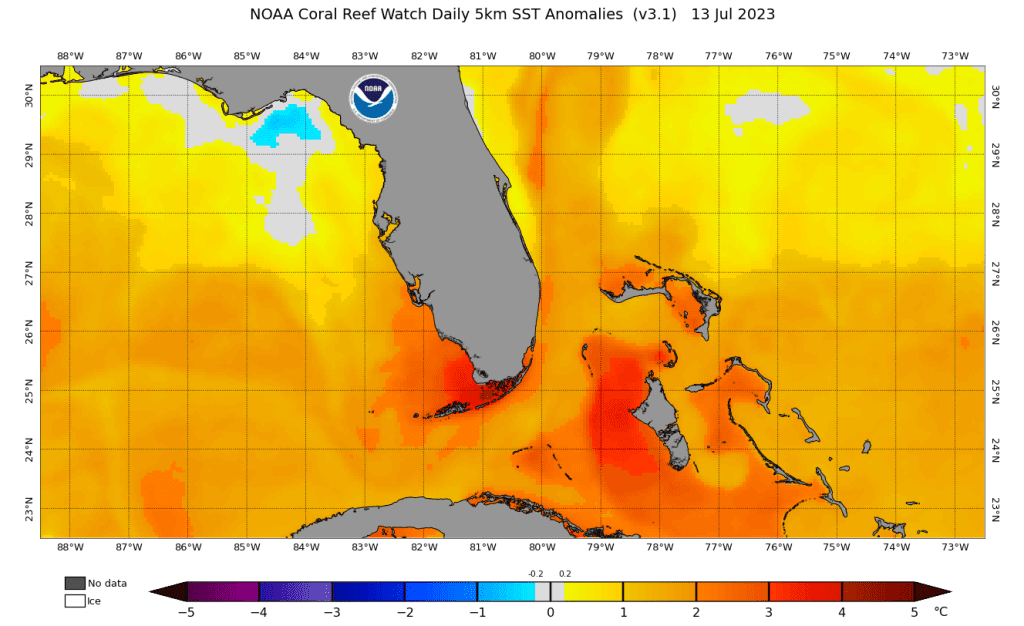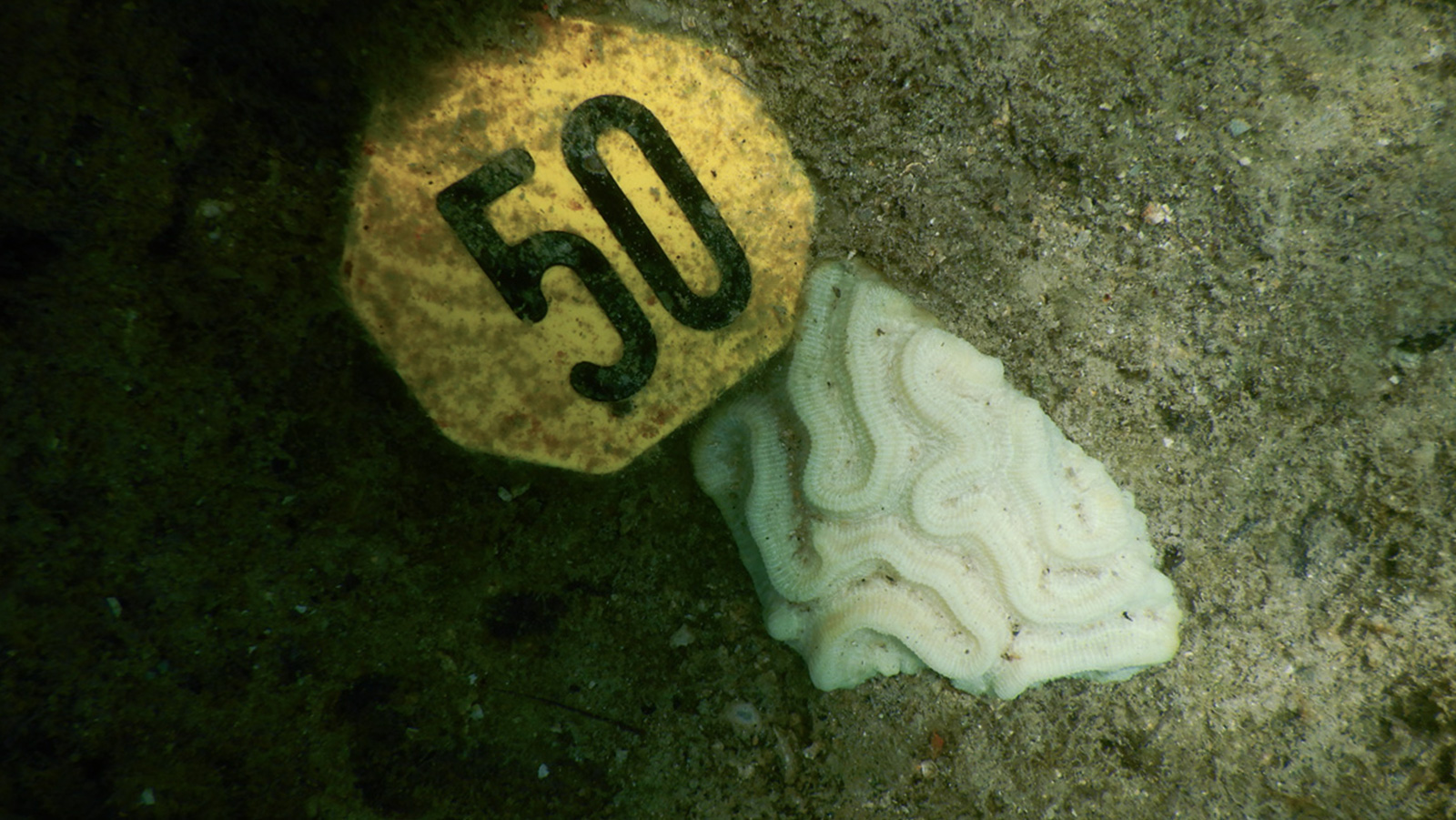A marine heatwave has spread across the Gulf of Mexico and the Caribbean with temperatures ranging between one and three degrees Celsius (~2-4.5˚F) above average. Ocean temperatures around south Florida are the warmest on record for the month of July (dating back to 1981). Marine heatwaves are not unprecedented, but their influence on tropical storm development and coral reef health, as well as the persistence of the current heatwave, are among the causes for concern.

A marine heatwave occurs when ocean temperatures remain significantly above average temperatures for an extended period of time (ie the temperature remains above the 90th percentile for at least 5 days – but some can last for months). The current heatwave is on the upper end of what is considered “average” intensity compared to historical marine heatwave events. However, what is most concerning is that heatwave conditions in the Gulf of Mexico have persisted approximately 5-6 months, longer than any widespread marine heatwave in the region on record (dating back to 1991).
With respect for tropical storms, warmer ocean temperatures are generally considered to fuel storm development. This is especially concerning being in the midst of hurricane season with an already warm Atlantic Ocean.
Additionally, a marine heatwave can also have negative consequences for coral reefs the longer it persists. Already being observed by scientists at NOAA’s Atlantic Oceanographic & Meteorological Laboratory (AOML), the extreme temperatures stress corals’ relationship with the algae found inside their tissue, providing the coral with nutrients by means of photosynthesis and giving the coral their coloration. When the corals become stressed, they expel the algae and turn a pale white, a process called coral bleaching.
While corals can recover from a bleaching event, the key factor here is time. If the extreme temperatures persist for long periods of time, as is the case with a marine heatwave, the corals cannot recover and eventually die being unable to reestablish the relationship with the endosymbiotic algae which they depend on for food. This has greater implications as corals are an essential food source and habitat for many marine organisms.
The marine heatwave has lasted since around November and December of 2022 in the Gulf of Mexico, and current forecasts by NOAA’s Physical Sciences Laboratory suggest a 70-80% chance that these extreme ocean temperatures persist through October in the southern Gulf of Mexico and the Caribbean.

In partnership with the University of Miami and NOAA’s Cooperative Institute for Marine & Atmospheric Studies (CIMAS), the AOML Coral Program is monitoring corals on Florida’s reef, including several of their long term monitoring sites to assess signs of heat stress. Coral colonies that were out-planted onto these monitoring sites in November 2022, as part of an experimental research project, began bleaching in early July 2023. These are some of the first signs of bleaching in Florida. While this does not necessarily mean the wild coral colonies will bleach, scientists will continue to monitor the ecosystems for signs of impacts from the prolonged extreme heat.
Additional resources:
Marine Heat Wave Impact on corals Q&A
Media Contact: Laura Chaibongsai, laura.chaibongsai@noaa.gov, (305) 361-4541
